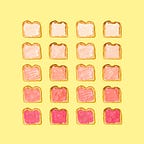4 Easy Lifestyle Adjustments To Live More Sustainably
--
Last week, I witnessed a truck full of men shovel handfuls of loose clothes into the recycling dumpster.
Yesterday, there was a bloody mattress, a porcelain toilet, and a broken sofa dumped at the recycling bin by my house. A mound of busted garbage bags and fly swarmed trash gushed out of the bin and stained the parking lot concrete with foul-smelling garbage guts.
Indianapolis is at risk of becoming the country’s most wasteful big city. Research done by the Indianapolis Star showed that we are the only big city in the United States without universal curbside recycling (free of charge). We only recycle 7 percent of our waste in comparison with the country’s most sustainable city, San Francisco, who recycle 80 percent of their waste.
“Indy — the nation’s 14th largest city — is the biggest municipality without a curbside recycling program serving every household”
Only five US cities have enacted some form of legislation against plastics bags, but internationally, countries are beginning to incentivize reusable bags and recycling habits. The over excess of human pollution has forced us to grow smarter about the impacts of what we consume and brainstorm ways to redesign our waste.
Some argue recycling is pointless and that the Earth is already doomed but I’m more optimistic than that. I believe we can make a difference through educated communities who have compassion for how we treat the earth and consider the impact of what we consume. This solution needs to be systematic and innovative, but it starts small. Below are 4 sustainable adjustments you can make to your routine to be more kind to yourself and the environment.
Utilize reusable bags
Data collected by Waste Management revealed that Americans use 100 billion plastic bags a year and it takes 500 years for one plastic bag to completely degrade. But even when this bag degrades it will release chemicals, toxins, and microplastics into the earth.
The simple alternative is to carry reusable bags with you. Not only do they divert single-use plastic from landfills, but they’re also great for traveling, going to the beach, storing your workout clothes, carrying your lunch, bagging produce at the grocery, or using it as a diaper bag. You can find reusable bags at grocery stores, department stores, dollar stores, or if you’re like me, Goodwill!
“Americans use 100 billion plastic bags a year”
A common argument against reusable bags is that the average person won’t use them enough. A simple solution is to make them convenient for yourself — keep them in your car, have some stored at work, keep them by the front door.
Cook at home
There’s an illusion associated with going out to eat, and that illusion, is convenience. Many of us are convinced that eating out is easier on pockets, time and energy but this is untrue. Eating out is costly — for you and the environment. Between the stream of waste created by the restaurant, what the customer discards, and
Research done by Investment Zen shows that we spend 325% more eating out than we do cooking the same meal at home.
If saving money isn’t compelling enough, research also shows there’s a significant reduction in the amount of sugar and processed foods in people who eat at home, and associated eating at home with a longer life expectancy.
Consider menstruation alternatives
Single-use menstruation products are not sustainable for the environment and they’re not good for our bodies.
Did you know that the harmful ingredients fragrance, dioxin, rayon or chlorine are in your tampons and pads? The World Health Organization classifies dioxins as an “environmental pollutants” that “belong to a group of dangerous chemicals known as persistent organic pollutants” which have highly toxic potential and can cause reproductive problems and interfere with hormones.
Rayon is a semi-synthetic fabric made from wood pulp that must go through a bleaching process which has been documented to have traces of dioxin, and the ingredient “fragrance” is a mixture of unidentified chemicals used to create a product’s scent. Big companies use “fragrance” as an umbrella term to avoid transparency about what chemicals are used in products.
If these products are bad for our bodies, they’re bad for the environment. As a matter of fact, the Center for Marine Conservation documented that over 170,000 tampon applicators were collected along US coastal areas between 1998 and 1999,” and continue to pollute beaches and be fatal for marine life.
“170,000 tampon applicators were collected along US coastal areas between 1998 and 1999"
Some amazing solutions are diva cups, period panties, reusable pads and applicators. While these products are better for the environment, they also are travel friendly, safe for your body, and save you money in the long run.
Minimize single-use items
Single-use items are things that we only use once. Cups and lids, water bottles, menstruation products, plastic bags, wrappers, straws, cutlery and styrofoam containers are all single-use items that end up in landfills and oceans after we discard them.
Not only do these items pollute our environment and kill marine life but they’re made up of harmful components that take hundreds of years to biodegrade. These items are fine once in a while, but when they are normalized on a daily basis, multiple times a day, by the majority of the population, we have a problem.
Many of these items can be easily replaced with reusable items, but we have to rethink what products we are willing to purchase. Basically, if it can’t be reduced, reused, repaired, refurbished, resold, recycled or composted then it should be restricted, redesigned and removed from production.
